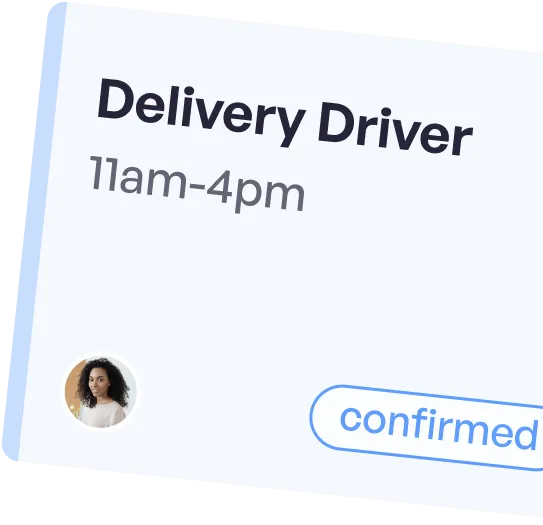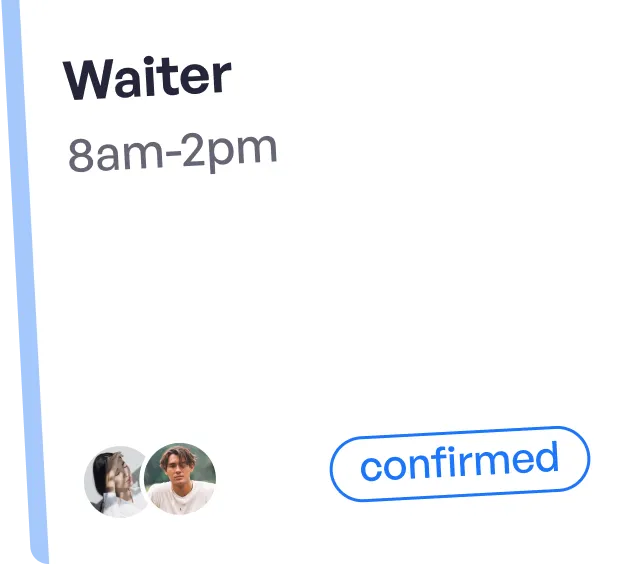Gig worker wages and the rising cost of living

How the current labour shortage is affecting restaurant deliveries.
As we all seek a return to normal, we must face some unavoidable realities. Fuel prices are soaring, supply chains are disrupted and inflation is on the rise. All industries are currently affected by labour shortages, not least of which is the hospitality sector. As society attempts to re-open and economies recover, the lingering effects of unemployment benefits combined with higher wage expectations and a shortage of overseas workers are touted as the main reasons for a labour shortage still gripping the hospitality sector in Ireland and the UK.
Takeaway food deliveries were one of, if not the only, branches of the hospitality sector that was permitted throughout the pandemic. This saw many restaurants double down on their reliance on takeaway meals and food deliveries. It also provided a new and much needed business venture to those restaurants who had typically shied away from deliveries in the past, with many entering a new market and providing customers (new and old) with take home meals and creative “cook at home” meal kits. Food deliveries provided a desperately needed lifeline to restaurants during the pandemic, providing a source of income for many who would otherwise have had to shut their doors. It seems evident that a paradigm shift in consumer behaviour occurred during the pandemic, and many believe the accelerated growth in the takeaway food industry is here to stay.
Now as we cautiously find ourselves trying to re-open our doors and fill our tables, it is apparent to all in the hospitality sector that it has not been a return to normal. Labour shortages are strife, with many experienced hospitality workers leaving the industry for a new career path. As reported by RTE, the Restaurant Association of Ireland has stated that 70,000 people have left the restaurant sector since the start of the pandemic, and there is currently a shortage of 7,000 chefs in the industry. So it is clear to all business owners in the hospitality industry, that the return to normal is anything but.
Food deliveries, which ironically provided the only viable business model and source of employment for many during the pandemic, are no less affected. Rising fuel prices and inflation are pushing the cost of working as a delivery driver higher than ever before. Wage expectations are growing, and like many others in the hospitality industry, some are choosing to leave behind their previous occupation in search of something new.
Gigable has looked at the numbers - and what we found is not surprising. Paying higher wages will increase demand for the gigs (or “shifts”) that you post and in turn will help you provide a better and more consistent customer experience.
Key Findings
- We asked our freelancers what they want: €10.40 an hour and €3 per delivery (£8.80 / £2.50 per delivery) or €14.40 ( £12.30) per hour.
- Businesses who have high fulfilment for their gigs pay €1.20 an hour more on average compared to businesses with low fulfilment on average.
- The effective hourly rate paid to a freelancer (inclusive of hourly, delivery and per km rates) plays a crucial role in attracting employment.
- In a survey our freelancers cite rising fuel costs as one of their biggest concerns - petrol prices have risen 28% since May 2020 in the UK and Ireland.
- Paying at least a living wage (currently €12.90 in Ireland and £10.85 in London) will boost demand for you gigs, improve gig fulfilment and help ensure a better customer experience.
- A business owner who increased their rates by €2 an hour (to €10/ hour + €2 delivery) saw their applications rise 70%.
Gig Fulfilment
Gig fulfilment refers to when an advertised gig or “shift” on the Gigable platform is applied to and completed by a driver in our network. It is a good proxy for demand or interest for a particular gig posted by a restaurant, and in turn the wages that they are offering. By exploring the median wages for businesses who have high and low fulfilment over the last 5 months, we can infer some trends.

The effective hourly wage (EHW) consists of the gross amount payable to a driver, inclusive of hourly, delivery and per kilometer rates. When looking at the median EHW across over 150+ business accounts, we have found that those with the highest fulfilment pay significantly more on average compared to businesses with a low fulfilment rate.
We found that these business owners pay a median wage of €13.33 per hour. This is €1.20 per hour more than businesses with low fulfilment for their posted gigs or “shifts”, who were found to pay a median wage of €12.10 per hour. If you are struggling to fulfil gigs and find drivers for your food deliveries, consider how your effective hourly wages stack up against the above figures. The businesses who attract the most applications and drivers for their gigs are the ones that pay more.
It was found that business owners (BOs) with high fulfilment typically pay between €12.47 - €13.32 per hour. Conversely, BOs with low fulfillment typically pay between €11.29 - €12.53 per hour.

Minimum Wage
From January 1st 2022 in Ireland, the minimum wage is set to increase 30 cents to €10.50 an hour. The current National Living Wage in the UK is also expected to increase in April 2022 from the current wage of £8.91 an hour to £9.50 an hour (a total of 59 pence or 6.6%). The living wage in Ireland rose 60 cents in September of this year to a total of €12.90, following a recommendation by the Living Wage group.
It is the responsibility of the business to ensure they are paying above the minimum wage to freelancers. Please consider paying an EHW of at least a living wage (which is currently €12.90 in Ireland and £10.85 in London). This will help you attract more applicants, more consistent freelancers, ensure you maintain a high fulfilment on the platform and guarantee a better customer experience for your customers.
Survey Results
In a recent survey of our freelancers, we asked them what was the minimum EHW that they would consider working for (inclusive of hourly, delivery and per km rates).
The results indicated that the average desired EHW was €14.54 (or £12.33) per hour. Similarly, the average hourly with combined per delivery rates were €10.40 per hour/ €3 per delivery (or £8.80 per hour/ £2.50 per delivery).
Fuel Prices

In the same survey, rising fuel prices were noted as a shared concern amongst freelancers, with freelancers seeking gigs with a higher rate per km to offset this rising expense, especially where the order radius is large for a gig. Petrol prices in Ireland and the UK have risen by 28% since June 2020. Diesel prices have seen similar increases, rising 27% and 24% in Ireland and the UK respectively during the same period.
It's important to consider these factors when hiring delivery drivers. Drivers are all too aware of these rising costs tied to their occupation, and wages should reflect this either by raising hourly rates or adding a per km rate to help offset this cost, especially if your delivery radius is large.
Gigable Case Studies
To determine the impact that the advertised price of a gig (i.e. hourly, per delivery and per km rates) have on fulfillment we can look at a recent example of a business owner who increased rates to boost fulfillment and applicant numbers for gigs.
Mr Burrito
Mr Burrito restaurant typically paid €8/ hour with €2 per delivery. The restaurant wanted to increase applicant numbers to get a better selection of freelancers and improve fulfilment for the gigs they were posting.
After raising their gig rates in September of this year to €11 an hour & €2 per delivery, the number of applicants per gig on average increased by 70%. They had previously averaged 2.7 per applicants per gig in the 4 weeks prior to increasing their rates. In the 4 weeks that followed the rate increase, they saw these numbers increase to 4.6 applicants per gig on average.
Thai House
The Thai House restaurant typically pays their drivers €8/ hour with €2.50 per delivery. As a busy restaurant, with high numbers of deliveries on the weekends, the actual amount paid to the driver consistently averages in excess of €16.50 an hour. Potential freelancers looking for gigs are likely to be unaware of how much they could truly earn with this business, since their advertised rates do not reflect the potential amount they could earn. To remedy this, the business started to advertise a guaranteed minimum rate of €14.50 and a free meal when posting their gigs. In the 4 weeks since making this change, they have seen the average number of applicants for their gigs increase by almost 78% (from 1.8 to 3.2 applicants per gig on average), all without actually changing the rates of pay for their gigs.
Conclusion
From our analysis of effective hourly rates and gig fulfillment, it is clear that the gross amount paid to a freelancer has a significant impact on fulfilment. With rising inflation and fuel costs it is evident that freelancers are opting to apply for gigs that pay close to, or in excess of, a living wage. Gigs with high fulfilment paid €1.20 more on average (€13.33 per hour), when compared to gigs with low fulfilment (€12.10 per hour). This data is supported by the feedback received from our freelancer community. When asked in a survey, they stated they wanted €10.40 and €3 per delivery when applying for gigs.
A little goes a long way. As was seen in our case studies, just €2 an hour more could increase applicant numbers by as much as 70%. We also saw that a guaranteed minimum wage and perks, such as offering free meals, could increase applications for your gigs by as much as 78%.
While freelance delivery drivers are independent contractors, it's important to think of them as a member of your team, delivering your brand to your customers. Having good relationships and paying well will lead to a better experience all round, and will motivate freelancers to work with you again in the future.
We at Gigable would like to invite you to join us and continue the conversation. We would like to engage with business owners and gather your feedback as we continually look to improve the platform, add new features and create a better experience for both business owners and freelancers. We encourage you to reach out and share your views.
Read a copy of the full report here:
Try Gigable today
Take the next step and join Gigable today. Let's put those insights into action and boost your business or freelance career!



More articles

Holiday Staffing Made Easy: Gigable’s Win-Win Approach to Compliance & Contractor Retention

Restaurant Employee Retention Strategies That Actually Work in 2025

